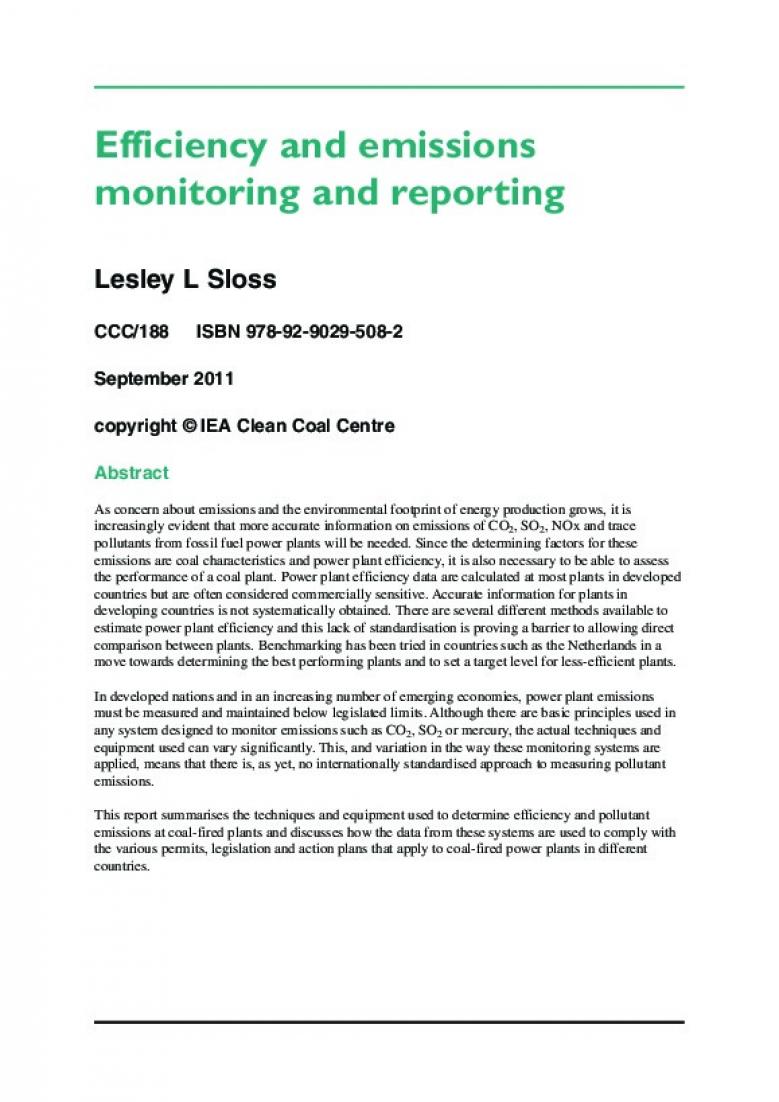CCC/188 ISBN 978-92-9029-508-2
September 2011
copyright © IEA Clean Coal Centre
Abstract
As concern about emissions and the environmental footprint of energy production grows, it is
increasingly evident that more accurate information on emissions of CO2, SO2, NOx and trace
pollutants from fossil fuel power plants will be needed. Since the determining factors for these
emissions are coal characteristics and power plant efficiency, it is also necessary to be able to assess
the performance of a coal plant. Power plant efficiency data are calculated at most plants in developed
countries but are often considered commercially sensitive. Accurate information for plants in
developing countries is not systematically obtained. There are several different methods available to
estimate power plant efficiency and this lack of standardisation is proving a barrier to allowing direct
comparison between plants. Benchmarking has been tried in countries such as the Netherlands in a
move towards determining the best performing plants and to set a target level for less-efficient plants.
In developed nations and in an increasing number of emerging economies, power plant emissions
must be measured and maintained below legislated limits. Although there are basic principles used in
any system designed to monitor emissions such as CO2, SO2 or mercury, the actual techniques and
equipment used can vary significantly. This, and variation in the way these monitoring systems are
applied, means that there is, as yet, no internationally standardised approach to measuring pollutant
emissions.
This report summarises the techniques and equipment used to determine efficiency and pollutant
emissions at coal-fired plants and discusses how the data from these systems are used to comply with
the various permits, legislation and action plans that apply to coal-fired power plants in different
countries.
| Attachment | Size |
|---|---|
| 651.94 KB |


